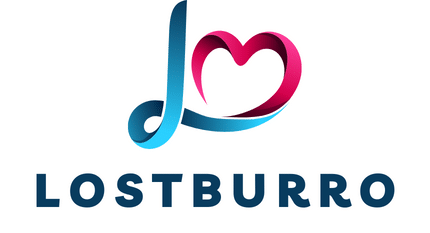What Are the Best Practices for Coding and Programming in a Multi-Cloud Environment?

There’s a revolutionary shift in the industry, and it’s all about multi-cloud environments. In an era where digital transformation is a mandate rather than an option, organizations are rapidly moving their applications and data to the cloud. This has increased the demand for cloud services, necessitating the need for multi-cloud management. But how does it affect the realm of coding and programming? This article provides valuable insights on the best practices for coding and programming in a multi-cloud environment.
Understanding What Multi-Cloud Is
Before delving into the best practices, it’s essential to understand what multi-cloud is. A multi-cloud environment incorporates numerous cloud platforms and providers, including Cloud Infrastructure as a Service (IaaS) providers like AWS, and Software as a Service (SaaS) providers. This setup allows organizations to distribute their workloads across multiple cloud services, which can enhance security, data management, and application performance.
A découvrir également : Can Advanced Machine Learning Techniques Improve Weather Forecasting Accuracy in the UK?
Beyond these advantages, a multi-cloud approach can provide improved resilience, reducing the risk of a single point of failure. With the right multi-cloud strategy, you can avoid vendor lock-in, increase your organization’s agility, and drive innovation. Now, let’s delve into how programming and coding practices should adapt to such environments.
Adopting Cloud-Native Architectures
Cloud-native architectures have become the norm in building applications for cloud environments. These structures are designed to exploit the benefits of cloud computing delivery models. In a multi-cloud environment, this translates to applications that are optimized for cloud platforms.
A lire également : Revamp your style with trending men's parachute pants
When developing code for multi-cloud environments, consider designs that allow for high availability and scalability. Microservices and containers are excellent tools for this. Microservices allow you to break down your application into smaller services that can be deployed and scaled independently. Containers, on the other hand, provide a consistent environment for these services to run across different cloud platforms.
Implementing Infrastructure as Code
Infrastructure as Code (IaC) is a practice that involves managing and provisioning computer data centers through machine-readable definition files, rather than physical hardware configuration or interactive configuration tools. In simpler terms, it is writing code to manage configurations, automate provisioning, and deployment tasks.
In a multi-cloud environment, IaC allows developers to use the same code base to create and manage environments in different cloud platforms. This not only increases efficiency but also enhances consistency across various environments. Tools like Terraform are excellent for writing IaC, as they are platform-agnostic and can be used with multiple cloud providers.
Practicing Secure Coding
Security is paramount in any cloud setup, but even more so in a multi-cloud environment. With multiple service providers, the attack surface expands, which necessitates the need for stringent security practices.
Secure coding practices involve writing code that is resistant to vulnerabilities. This requires knowledge of how attacks happen and how to prevent them. For instance, always validating input data can prevent injection attacks. Encrypting sensitive data, both at rest and in transit, is another vital practice.
Leveraging Automation and CI/CD Pipelines
Automation plays a critical role in managing multi-cloud environments. Continuous Integration and Continuous Deployment (CI/CD) pipelines are vital tools that help automate the process of integrating code changes and deploying applications to production.
In a multi-cloud setup, CI/CD pipelines can help ensure that code works consistently across different cloud platforms. They do this by automating tests and deployments, ensuring that code changes don’t break the application in different environments. Tools like Jenkins, CircleCI, and AWS CodePipeline are excellent for setting up CI/CD pipelines.
Utilizing Multi-cloud Management Tools
Lastly, consider the use of multi-cloud management tools. These platforms can help manage multiple cloud services from a single dashboard, simplifying the process of monitoring and managing your applications across different clouds.
With multi-cloud management tools, you can easily manage costs, security, and governance across multiple cloud environments. They also provide a single pane of glass for visibility into all your clouds, helping ensure nothing slips through the cracks.
In conclusion, coding and programming in a multi-cloud environment can be challenging, but with the right practices and tools, it can be a rewarding endeavor. So, don’t hesitate to embrace multi-cloud – the future is here!
Expanding Knowledge on Security Measures
In a multi-cloud environment, the security of the data and applications is paramount. Given the complexity and variety of threats in the cyber world, it’s crucial to have robust security measures in place. The first step in this process is understanding the unique security challenges posed by a multi-cloud environment.
A multi-cloud strategy can increase the attack surface because you’re now dealing with multiple cloud providers, each with its own set of security protocols. The complexity of managing security across these multiple environments can lead to gaps, which can be exploited by cybercriminals.
These challenges underscore the significance of adopting best practices in cloud security. The first practice is to understand the shared responsibility model. This model outlines what security tasks are the responsibility of the cloud provider and what tasks are yours. For example, cloud providers are generally responsible for the security of the cloud, including infrastructure, hardware, software, and physical facilities. On the other hand, you are responsible for security in the cloud, which covers data, applications, and user access management.
The second practice is to encrypt sensitive data, both at rest and in transit. Use strong encryption methods to protect your data from unauthorized access.
Thirdly, implement Identity and Access Management (IAM) controls. IAM controls determine who can access what resources in your multi-cloud environment. They can help prevent unauthorized access and reduce the risk of data breaches.
Lastly, regularly review and update your security measures, considering the evolving nature of cyber threats. Cybersecurity is not a one-off task but a continuous process that requires vigilance and proactive measures.
The Importance of Effective Data Management
In a multi-cloud environment, effective data management is vital for ensuring data integrity, accessibility, and security. Multi-cloud data management can be complex due to the dispersion of data across multiple cloud platforms.
A crucial aspect of data management in a multi-cloud environment is data governance. It involves establishing policies and procedures to manage data availability, usability, integrity, and security. A well-defined data governance strategy can help you maintain high-quality data, comply with regulations, and make informed business decisions.
Data integration is another critical component. It involves combining data from different sources and providing users with a unified view of the data. Data integration can be challenging in a multi-cloud environment due to the disparate systems and technologies used by different cloud providers. However, it is possible with the right integration tools and strategies.
Data protection is also essential. It involves implementing measures to prevent data loss or corruption. This can include regular data backups, data replication, and the use of fault-tolerant systems.
In summary, efficient data management in a multi-cloud environment can help you maximize the value of your data while minimizing risks. It requires a well-thought-out strategy, the right tools, and consistent execution.
Conclusion
The move towards a multi-cloud environment is a strategic one, allowing businesses to leverage the strengths of multiple cloud providers for improved flexibility, redundancy, and functionality. However, it does bring about unique challenges in the realm of programming and coding. By adopting cloud-native architectures, implementing Infrastructure as Code, practicing secure coding, leveraging automation and CI/CD pipelines, and utilizing multi-cloud management tools, these challenges can be effectively navigated.
Furthermore, a deep understanding of security measures and effective data management practices is paramount. Prioritizing security in every aspect of the multi-cloud environment, from configuration to coding, is a must. Equally important is the management of data, ensuring its availability, integrity, and security.
In essence, the multi-cloud environment requires a new mindset and a fresh approach to coding and programming. As we embrace this inevitable shift, it’s not about discarding everything we learnt previously but about adapting our skills and knowledge to this new paradigm. Ultimately, programming in a multi-cloud environment is not just about mastering new tools and techniques. It’s about leveraging these skills to drive innovation and deliver value to the business.
